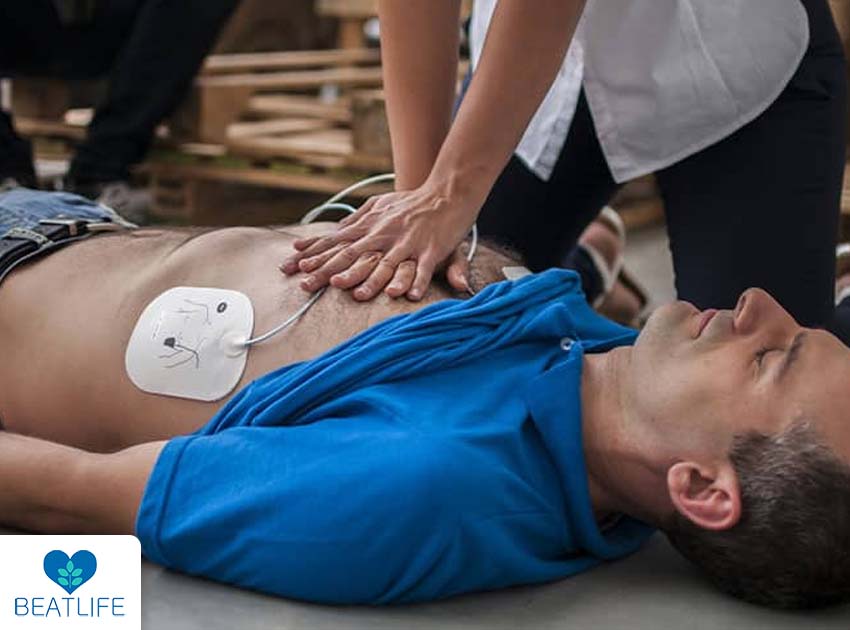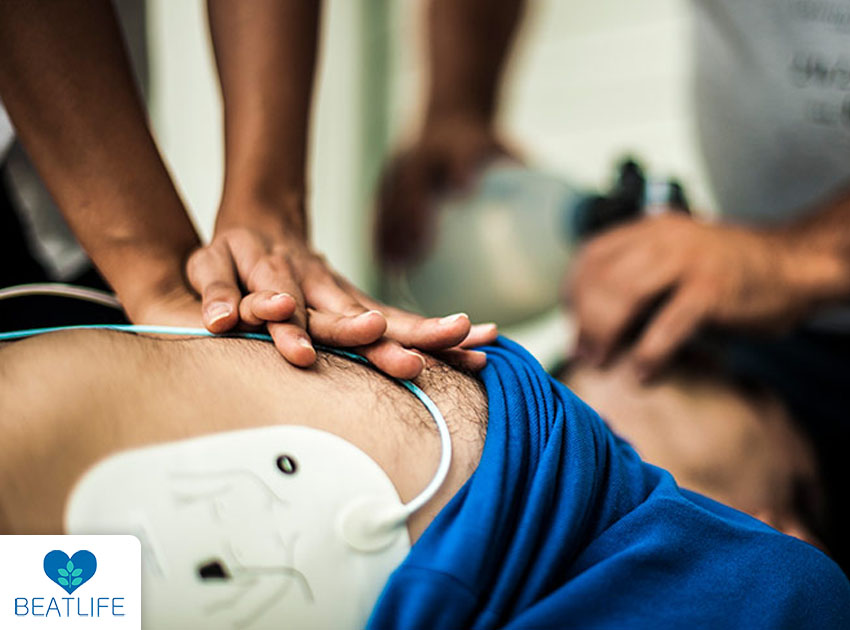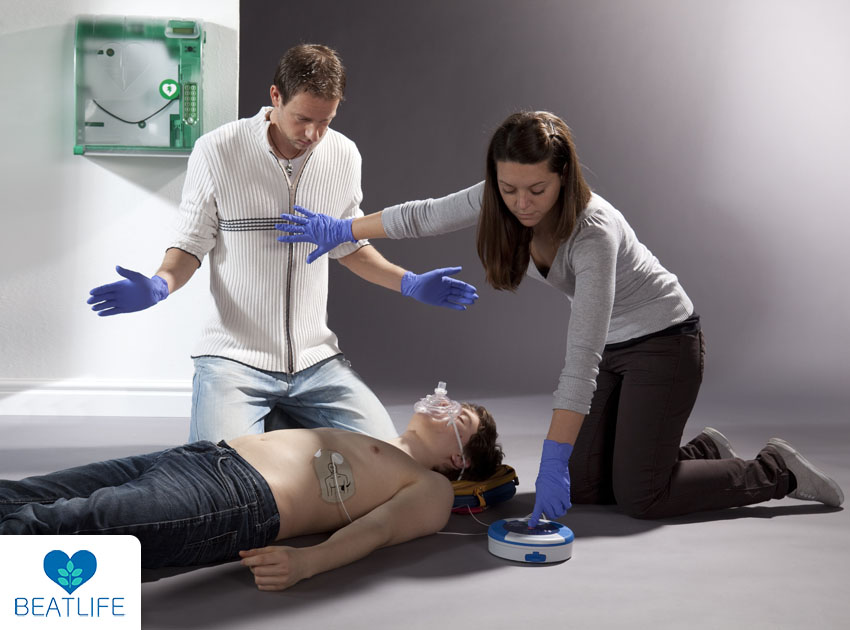When it comes to emergency response, especially in cases of cardiac arrest, speed is of the importance. The use of CPR feedback device such as CPRMER made available by BEATLIFE, or automated external defibrillators (AEDs), has proven essential in helping those in need get emergency care. But as important is what step after a defibrillation attempt should be carried out. The actions performed in the instants that follow an attempt at defibrillation may save lives. This tutorial aims to provide a knowledge of the step after a defibrillation attempt and its crucial role in the chain of survival. These interventions, performed by knowledgeable or educated personnel, are critical to improving recovery rates in cardiac crises.

Contents
Resume CPR
the first step after a defibrillation attempt is keep performing CPR. Although defibrillation can bring the heart’s rhythm back to normal, the heart might not operate normally right after. By preserving blood flow and oxygen delivery to the brain and other essential organs, CPR plays a crucial part. It does two things: first, it mechanically pumps blood throughout the body by using chest compressions. This is essential to guaranteeing that essential organs, particularly the brain, get the oxygen they require. A lack of oxygen causes cells to break down quickly, which raises the possibility of brain injury.
Second, by simulating the heart’s pumping action and the lungs’ oxygen-supplying role, CPR keeps the oxygen supply steady and guarantees that oxygen reaches every part of the body continuously. For optimal CPR, the American Heart Association suggests particular compression rates and depths. CPR is administered for around two minutes, and then the patient is reassessed to decide what to do next.
therefore, restarting CPR after a defibrillation effort serves as a crucial link between the shock and the possibility of a successful resuscitation. This vital procedure keeps the patient’s blood flowing and oxygen supply intact while the heart is still not functioning normally, greatly increasing the patient’s chances of life and ultimate recovery.
Post-CPR Reassessment
Following the use of defibrillation shocks during a cardiac emergency, the post-CPR evaluation is an essential step after a defibrillation attempt. An essential component of the response process, this evaluation guarantees that the patient’s status is appropriately tracked. Following around two minutes of CPR and, if necessary, defibrillation, there is a break that permits a heart rhythm evaluation, which is usually carried out with sophisticated monitoring equipment. The reevaluation may suggest that another effort at defibrillation is necessary for individuals with shockable rhythms such as ventricular fibrillation, if it is deemed safe to do so. Responders must make sure the defibrillator is charged and that all people are away from the patient since safety is their first concern.
Until the patient’s cardiac rhythm stabilizes or a choice is made to stop resuscitation, the cycle of defibrillation and CPR is carried out. But in non-shockable rhythms, such as asystole, the focus switches to sustaining effective CPR and giving recommended medicines. The patient’s prognosis ultimately depends on effective communication and collaboration during these crucial times.

Repeat Defibrillation Attempts
Thinking about doing another defibrillation effort is a crucial step after a defibrillation attempt. These efforts are crucial to the endeavor of reestablishing a stable cardiac rhythm and are particularly pertinent when managing shockable arrhythmias, such as ventricular fibrillation or pulseless ventricular tachycardia.
The procedure usually starts with a reevaluation of the patient’s pulse and heart rhythm. A further effort at defibrillation is necessary if the rhythm is still shockable, signifying that the heart is still chaotic and non-perfusing. To ensure the safety of all responders, the defibrillator must be fully charged and prepared. It is impossible to overestimate the significance of coordinated collaboration during these stressful times. In order to deliver the shock, the team has to communicate clearly. The team should start doing excellent CPR as soon as the shock is given, giving chest compressions and ventilations as advised.
Until the patient’s rhythm stabilizes or, in some situations, until the choice is taken to stop resuscitation attempts, this cycle of evaluating, defibrillating, and starting CPR is repeated. It’s important to remember that these measures must be taken quickly and effectively. Every step in the procedure, particularly repeat defibrillation, increases the patient’s chance of survival because time is of the importance. To sum up, in the event of shockable rhythms, the next course of action following a defibrillation attempt include determining if repeat defibrillation is necessary, ensuring safe and coordinated teamwork, and maintaining high-quality CPR in order to optimize the likelihood of restoring a stable heart rhythm.

Who should be responsible for the post-defibrillation steps?
First responders and healthcare providers are among the educated and trained individuals who are usually in charge of post-defibrillation procedures. These people are essential in evaluating the victim’s reaction following a defibrillation effort and figuring out what has to be done next. Their experience guarantees that quick actions are performed to support the overall resuscitation procedure, such as ongoing cardiopulmonary resuscitation (CPR) and monitoring. In order to improve the likelihood of a good recovery during cardiac crises, efficient post-defibrillation treatment depends on clear communication among the team and a coordinated effort.
Is there any equipment or technology that aids in post-defibrillation care?
Modern technologies like cardiac monitors (such the LifePak 15 or ZOLL X Series) are essential for real-time cardiac rhythm monitoring in post-defibrillation therapy. CPR feedback mechanisms are a feature of several automated external defibrillators (AEDs), such as the Physio-Control LIFEPAK CR2 and the Philips HeartStart FR3. These systems offer guidance on chest compressions in real time. Furthermore, CPRmeter—like BEATLIFE CPRmeter—provide ongoing feedback on the effectiveness of chest compressions. By utilizing technologies such as these, healthcare providers can be certain that they will receive accurate and timely information in the crucial moments that follow a defibrillation attempt. This can lead to better post-defibrillation care and ultimately better patient outcomes in emergency scenarios.
Reviewed by Dr Jamshidi Mohammad Reza

